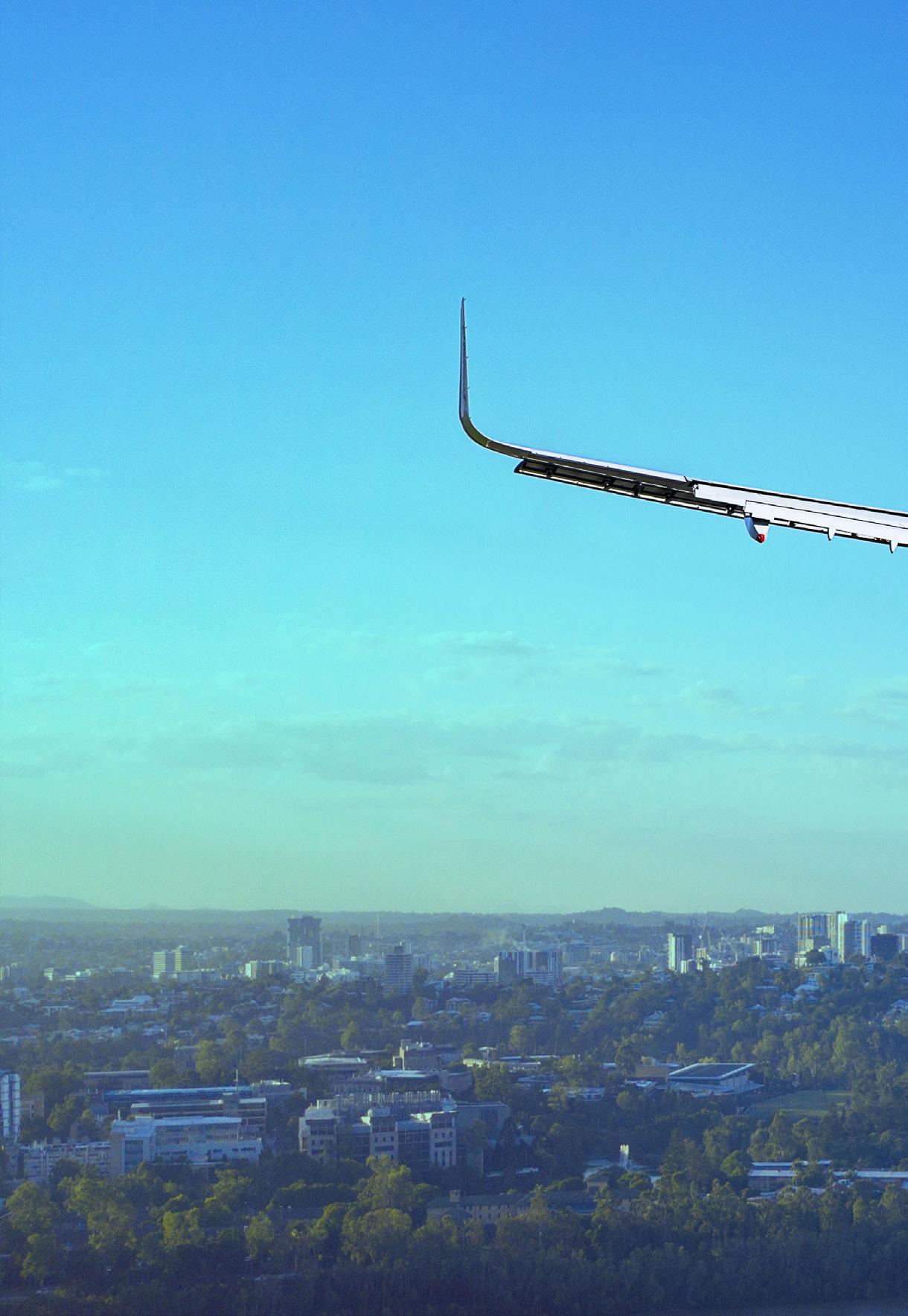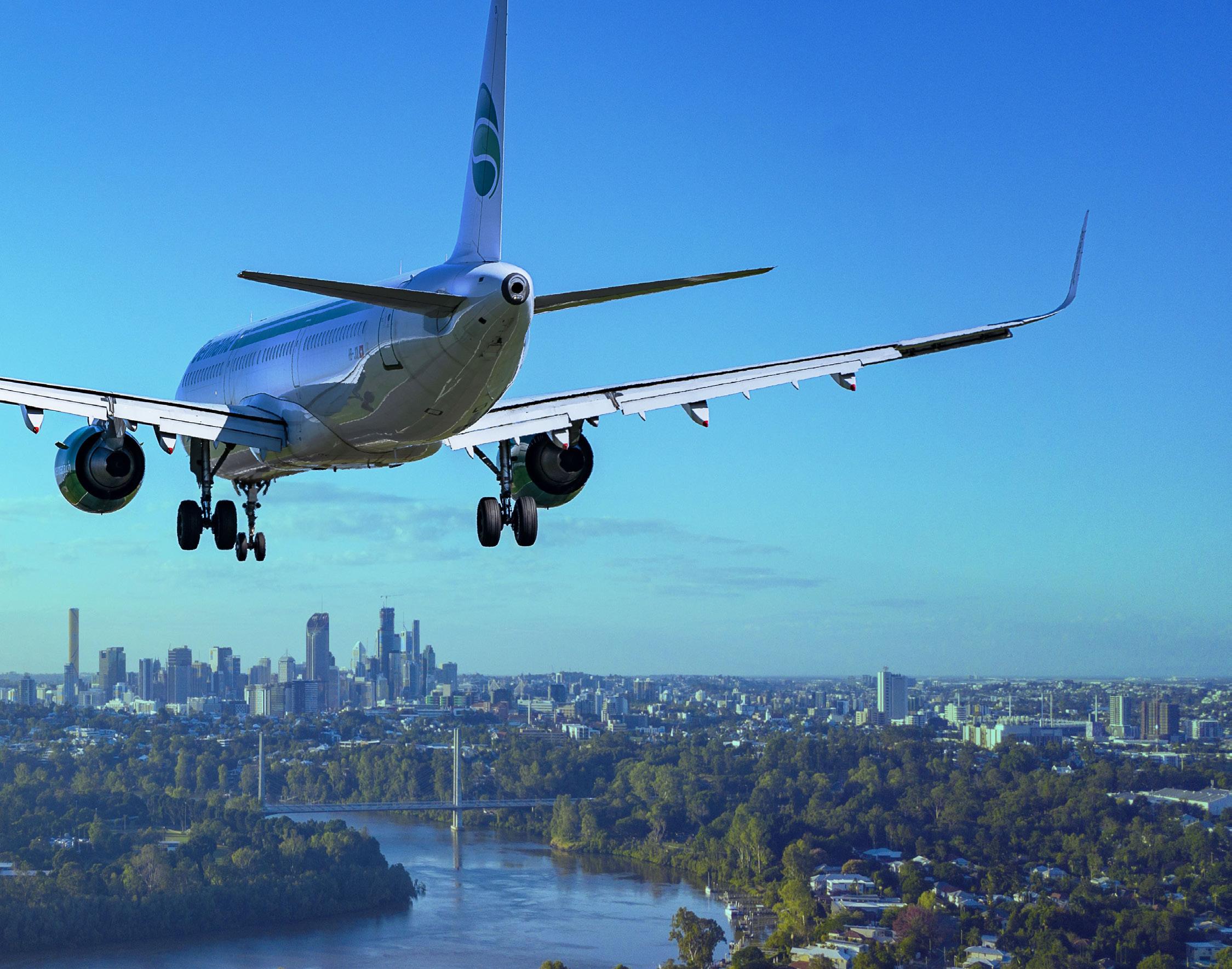
4 minute read
How can airports help climate change?
By Staff Writer
As climate change becomes the defining issue of a generation, Los Angeles World Airports (LAWA) recently hosted a Sustainability Symposium to provoke discussions about how to tackle this looming threat in part through sustainable aviation practices – including through development of a new LAWA Sustainability Action Plan.
The event, held at Loyola Marymount University (LMU), brought together more than 80 experts and industry professionals from aviation, aerospace, concessions and academics for a half day to hear from sustainability thought leaders.
THE SYMPOSIUM The Sustainability Symposium included remarks from L.A. City Councilman Mike Bonin (CD11), Commissioner Gabriel Eshaghian of the Los Angeles Board of Airport Commissioners (BOAC), LAWA CEO Deborah Flint and LMU Professor of Biology and Executive Director of the Centre for Urban Resilience, Eric Strauss. BOAC Vice President Valeria Velasco was also in attendance.
“Caring for our environment relies on adopting and implementing smart solutions, big or small, that truly move the needle toward real sustainability,” said Gabriel Eshaghian, Commissioner, Los Angeles Board of Airport Commissioners. “LAWA is launching next-generation policies and approaches that will help us embrace sustainable principles to help us protect our environment and resources for years to come.”

Los Angeles World Airports are taking bold action to do their part in the fight against climate change and according to Deborah Flint, Chief Executive Officer of LAWA they are adopting industry-leading policies to reduce their environmental impact and making significant investments in renewable energy and electric vehicles.
“At the symposium we reflected on the importance of collaboration among academia, citizens and industry to realize LAX’s fullest potential as an industry leading green airport,” she added.
OTHER SPEAKERS At the Sustainability Symposium, attendees also heard from a panel of industry leaders, including: Matt Petersen, President and CEO, LA Clean Tech Incubator; Maria Race, Director of Environmental Policy, Programs, and Sustainability, United Airlines; Kevin Noertker, CEO and co-founder, Ampaire; Terence Young, Principal, Airports Leaders and Design Director, Gensler; and Julie Villet, URW Lab and CSR Director, Westfield. Closing remarks were given by LAWA Deputy Executive Director for the Environmental Programs Group Samantha Bricker.
A STEP IN THE RIGHT DIRECTION The symposium is a key step on the journey toward creating LAWA’s final Sustainability Action Plan, which is being designed to further enhance LAWA’s industry-leading approach to aviation sustainability. The ambitious plan will outline how LAWA can build on its existing sustainability program by introducing new, forward-thinking initiatives while fortifying and expanding on proven steps.
POSITIVE RIPPLES LAWA’s airline and government agency partners are also exploring emissions reduction from aircraft operations through new technologies and best practices, including sustainable alternative jet fuel. And, while LAWA already has one of the largest and greenest fleets in the nation, with 57 percent of it powered by an alternative fuel or electricity, plans to replace old, diesel-powered airside buses with clean and quiet electric ones will reduce nearly 308 tons of greenhouse gas emissions each year to zero. LAWA is also in the early stages of developing a comprehensive utility monitoring and resource management plan that will help identify even more areas for conservation.
Progressive policies put in place in 2018 by LAWA will shape the airport’s infrastructure in additional sustainable ways, including designing buildings to LEED Silver or higher, and designing non-building programs such as runways to be held to similar standards. Those polices apply to LAX’s multi-billion dollar modernization project, the largest public infrastructure investment in the history of Los Angeles.
SUSTAINABILITY LAWA’s sustainability plan also emphasizes economic outreach with programs like Edge4Vets, How to Work with LAWA, and the successful HireLAX Apprenticeship Readiness Program. To date, HireLAX has graduated 110 students – many from disadvantaged circumstances – and prepared them to excel in building the next generation of their community’s airport.
The sentiment is felt globally. Similar commitments were undertaken as part of ACI

EUROPE, the trade association for the European airport industry, announcing a Resolution formally committing the industry to achieve net zero by 2050, at the latest. The collective pledge – further undersigned by 194 airports, operated by 40 airport operators across 24 countries - marks a significant step change in the climate action ambitions for the airport industry.
Sani Sener, CEO and President TAV Airports said “Sustainability is at the core of our business model at TAV. We strive to create the highest value for our stakeholders while minimizing our impact on the environment. Ankara Esenboga and Izmir Adnan Menderes have achieved Level 3+ Neutrality status for the last three years at the Airport Carbon Accreditation Program. We believe that contributing to efforts to counter climate change is our responsibility to future generations. We aim to confirm with the highest standards and best practices in our industry.”

There are already 3 net zero airports in Europe, Luleå, Ronneby and Visby all operated by Swedavia. The deadline of 2050 is aligned with the latest IPCC evidence and the decarbonisation strategy set out by the European Commission and adopted by the Council of the European Union.
Dr Michael Kerkloh, President of ACI EUROPE and CEO of Munich Airport commented “Europe’s airports have been leading climate action with annual reductions announced every year for the past decade². 43 of them have actually become carbon neutral, supported by the global industry standard Airport Carbon Accreditation. However, today’s commitment brings a new dimension to this – no offsets. Crucially, with its NetZero2050 commitment, the airport industry is aligning itself with the Paris Agreement and the new Climate goal adopted by the EU.”










